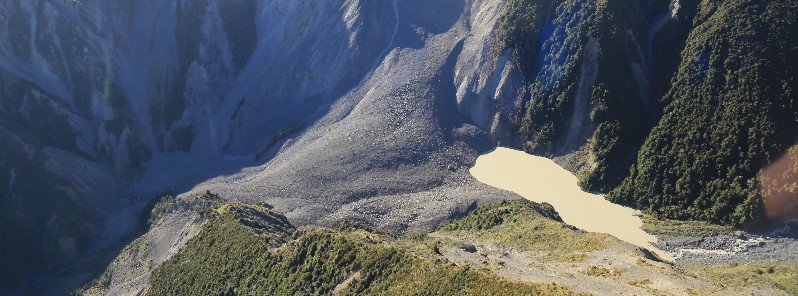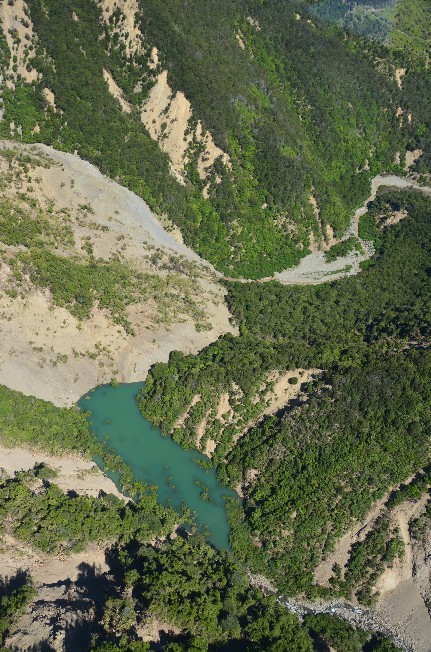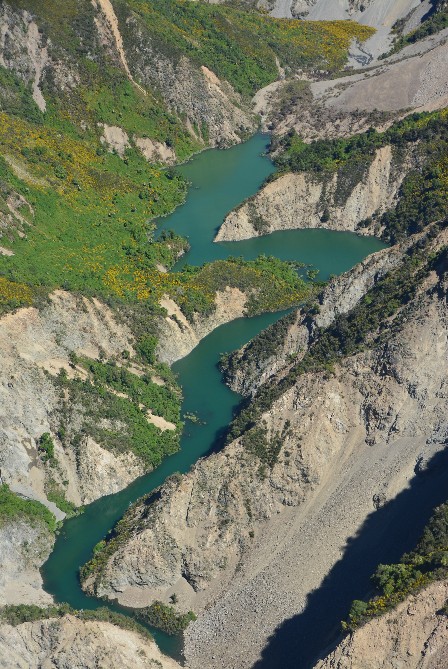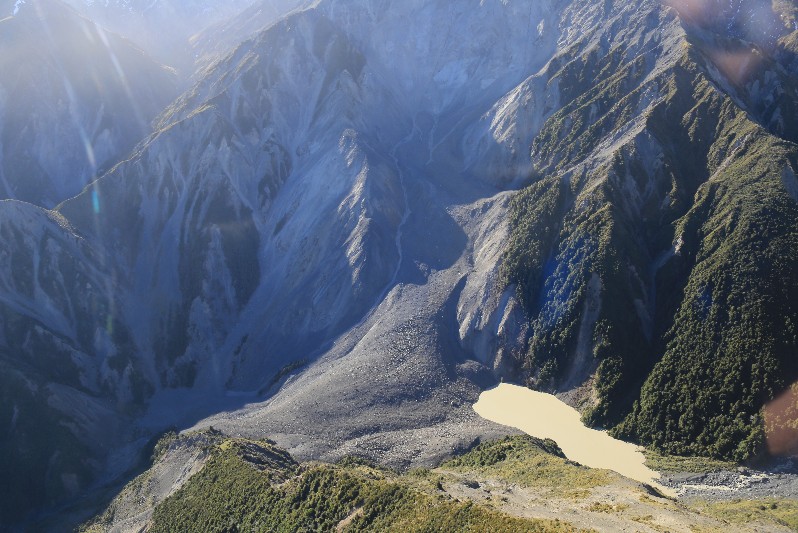150 landslide dams, up to 100 000 landslides after Kaikoura earthquake

New Zealand's GeoNet said today they have identified 150 landslide dams after M7.8 Kaikoura Earthquake and an estimated 80 000 to 100 000 landslides triggered by the main event and its aftershocks.
"With the M7.8 Kaikoura Earthquake, landslides and land deformation have been at the forefront of risk to communities living in North Canterbury and Marlborough," the agency said.
Certain areas have more landslides than others. In their flybys, the landslides begin just south from Cape Campbell, becoming more intense south of the Clarence River, with several large (100 000 – 500 000 m3) landslides disrupting both State Highway 1 and South Island Main Trunk railway (e.g. Ohau Point and Waipapa Bay areas). South of Kaikoura, on the steep slopes near Twin Tunnels, damage was similar to areas north of Kaikoura, again covering and or disrupting both State Highway 1 and railway.
Although most of the landslide dams are small and pose little risk, the agency is monitoring 11 that pose a risk to downstream. These are Conway, Gelt, Hapuku, Leader upstream, Leader downstream, Linton, Medway, Ote Makura, Stanton, Towy, and Waima.
Landslide dams with the highest level of hazard are currently:
- Linton Stream, which has a large, leaking dam with a lake behind it
- Conway River (lower dam) – water is flowing through the dam which is helping to lower the lake level behind it, but there is still a potential for failure
- Hapuku River – the dam is formed by a rock, sand and silt avalanche. The lake is filling so the hazard will increase through time until it is full.

Linton stream, landslide dam, New Zealand – December 2016. Credit: GeoNet

Conway river, landslide dam, New Zealand – December 2016. Credit: GeoNet
The likelihood of dam failure is higher during periods of steady or intense rainfall, and for about 24 hours afterwards. There is more likely to be a rapid dam failure if there is a lot of water upstream of a small dam, whereas rapid dam failure is much less likely if there is a just a small amount of water upstream of a large dam.
There are three different options for how long landslide dams last.
"These data are general and apply to all of the dams, so we can’t give any specific information on what might happen at each of the dams. At this stage, none of the dams look like they will overtop their river flood banks if they do fail rapidly. If rapid failure occurs without being associated with heavy rainfall then the level of the water will probably be a maximum of the level experienced during a 1 in 10-year flood – but no warning will be given," GeoNet said.
Short lived landslide dams: Over half of dams (about 56%) fail within a month after forming. In this case, the dam remains in place until it is rapidly overtopped by water. Rarely, the dam may fail more slowly. The time between the dam overtopping and rapid failure can be between days and a month. As an example of rapid dam failure, the Poerua River dam failed in 1999. While this example shows what has happened in the past when a landslide dam rapidly failed, it’s important to note that this dam is larger than any of the dams seen in the Kaikoura area.
Medium lived landslide dams: Almost a third of landslide dams survive the initial overtopping but then eventually either fail rapidly because of downward or headward erosion, or fail slowly as water permeates through it, removing sediment over time until the dam has gone.
Long lived landslide dams: Some dams become a semi-permanent or permanent feature, forming a lake behind the dam. Examples of this are the Young River dam and the dam at Lake Waikaremoana, which formed the lake itself. Both of these dams are much larger than any of the dams seen in the Kaikoura area.

Hapuku river, landslide dam, New Zealand – December 2016. Credit: GeoNet
Please take precautions and stay away from landslides and landslide dams, the agency warns. Stay away from steep cliffs and slopes in the Kaikoura and Marlborough region in case of rockfalls.
Director of the Ministry of Civil Defence and Emergency Management, Sarah Stuart-Black, advises that people in areas downstream of landslide dams to be especially vigilant and to keep clear of river flood channels and outlets. Further safety information is provided by the Canterbury Civil Defence and Emergency Management Group.
Featured image: Hapuku river, landslide dam, New Zealand – December 2016. Credit: GeoNet

Earth is Going Fragile – She is Wreathing in pain, He fragility is reflected in all the forces of her going violent and destructive. Bible In Romans 8:19 says – “The whole creation waits breathless with anticipation for the revelation of God’s sons and daughters” in other words it is waiting liberation from evil mind ruling it, from religious and executive realm – https://www.scribd.com/document/322252992/Two-Critical-Dangers-to-Which-Earth-and-Humanity-is-Evolving